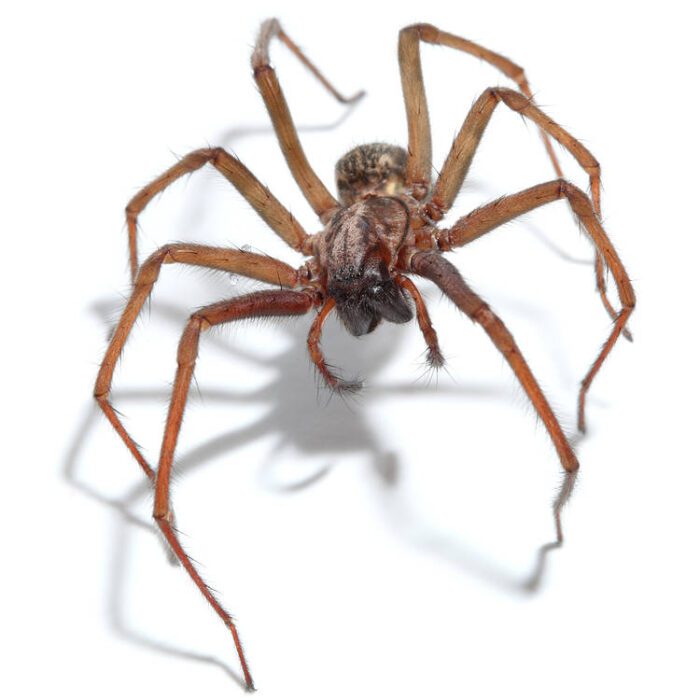Spiders are fascinating creatures that inhabit almost every land environment on earth. With over 47,000 described species, spiders display an incredible diversity in sizes, shapes, colors, and behaviors. One thing that almost all spiders have in common, though, is eight legs. Read on to find out more about why spiders have eight legs, how they use them, and the few exceptions to this rule.
Table of Contents
Why Do Spiders Have Eight Legs?
Having eight legs is one of the defining characteristics of spiders. All spiders belong to the arachnid class of invertebrates, which also includes scorpions, mites, ticks, and harvestmen. Of these groups, only spiders and harvestmen have eight legs as adults.
This common ancestry means that the eight-legged body plan evolved early in the history of arachnids and has remained essentially unchanged for hundreds of millions of years. This consistency suggests that having eight legs conveys an evolutionary advantage for these types of organisms.
Scientists theorize that the eight legs help spiders in critical ways:
- Mobility and speed – The more legs an animal has to move with, the faster it can generally run. Spiders use their legs to quickly chase down prey or escape predators. Some species can even “gallop” using alternating groups of legs.
- Balance and agility – Having multiple contact points with the ground at all times allows spiders to climb varied terrain and hang upside down without falling. The legs help counterbalance the weight of the body.
- Constructing webs – Web-building spiders use specialized legs and feet to weave intricate webs. The hind legs release silk and the other legs carefully manipulate the threads into patterns.
- Capturing prey – Many spiders employ venomous fangs to paralyze their prey, but the front legs also help grasp and secure victims that blunder into a web or hunting spider’s path.
- Carrying egg sacs – Female spiders use thickened rear legs to transport egg sacs after laying their eggs. They will carry the egg case with them until the babies hatch.
So in essence, the eight legs enable spiders to move efficiently, handle surfaces well, sense vibrations, and perform other necessary functions for an active predator.
How Do Spiders Use Their Eight Legs?
A closer look at the anatomy of spider legs reveals specializations that allow them to perform such a wide range of critical tasks:
- Two main sections – Spider legs have seven distinct segments. The femur, patella, and tibia make up the main shaft, while the metatarsus and tarsus form the outer section. These bendable joints allow for greater mobility.
- Claws and scopulae – At the tip of each leg, spiders have a small claw for gripping surfaces. Species that climb smooth surfaces also have thick pads of hair called scopulae under their feet to adhere using van der Waals forces.
- Trichobothria – Tiny hairs cover spider legs to detect air currents, chemicals, sounds, and vibrations. This sensory info allows spiders to detect threats, find mates, sense prey in their webs, and more.
- Blood circulation – Spiders legs have an open blood circulation system, with blood pumped through arteries and gathered in veins. This system exchanges oxygen and nutrients to power leg movement.
In a typical walking gait, spiders use four legs on one side of their body, then four legs on the opposite side, alternating their steps quickly. Some species can selectively amputate their own legs if injured, and certain kinds of spiders can even regenerate lost legs through several molts.
Exceptions: Spider Species with 6, 4, or No Legs
While having eight legs is the rule, there are a few groups of spiders that break the mold:
- Daddy longlegs/Harvestmen – Often confused with spiders, harvestmen constitute a separate order of arachnids. Unlike spiders, their bodies and legs clearly segment into two main tagma. They use their longer front legs to grab prey.
- Larval spiders – Baby spiders hatch from eggs with only six legs. They undergo several molts before developing their full count of eight legs once reaching adulthood.
- Some male orb weavers – Certain male spiders in orb weaver families like Araneidae and Nephilidae mature with six or even four legs instead of eight. They prioritize body size and sexual organs over leg count.
- Trapdoor spiders – Some male trapdoor spiders also have just six legs, which allows them to be more agile and mobile than their eight-legged counterparts when searching for mates.
So while over 99% of spiders have eight legs as adults, exceptions highlight how different evolutionary pressures can lead to adaptations like altered leg numbers. The extreme consistency of eight legs across spider families does suggest profound advantages conferred by this body plan.
Conclusion: Why Eight?
Spiders’ shared ancestry sets the stage for all species inheriting the same leg count. Over hundreds of millions of years of natural selection, this arrangement has persisted because enhanced mobility, speed, balance, flexibility, sensory perception, web construction, and other key functions favor survival and reproduction.
Certain males in select spider lineages illustrate that six or even just four legs can get the job done as well. But for the vast majority of spiders worldwide, having eight jointed legs to efficiently catch food, find mates, build silk shelters, and traverse the landscapes they inhabit makes living life on eight legs easy.
So the next time you see a spider scurrying by, take a moment to admire the ingenious engineering behind those eight nimble legs!
🔮 More From Pestifier

With over 5+ years of experience in pest control and a PhD in Entomology, our author brings a blend of scientific knowledge and practical expertise to Pestifier.com. Passionate about creating pest-free environments, they provide effective tips and strategies for managing and preventing pest infestations. Connect on Facebook for the latest updates and insights.

